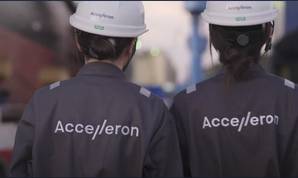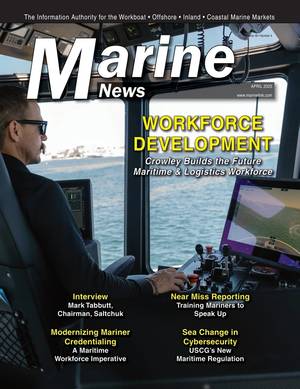Navigating a Regulatory Storm: California Strikes Again
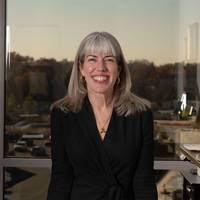
Onerous emissions rules are certainly no stranger to the maritime sector at large, arguably none more so than those that work and live in California. The U.S. West Coast state is a global shipping hub, with a coastline spanning more than 800 miles and 11 major ports. It also is known for its penchant for creating and enforcing maritime rules, rules that on occasion transcend the technological means to enact them. Enter Jennifer Carpenter, President and CEO of the American Waterways Operators (AWO), the national advocacy group for the tugboat, towboat and barge sectors.
Wärtsilä to Convert Engines on Chevron’s LNG Carriers to Cut Methane Emissions
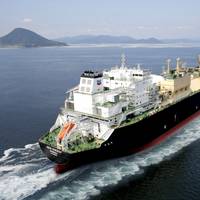
Technology group Wärtsilä, in partnership with Chevron Shipping Company, plans to convert one engine on six of Chevron Transport Corporation LNG Carriers from dual-fuel (DF) to spark gas (SG) operation to reduce methane emissions.The conversions are intended to reduce greenhouse gas emissions by lowering methane slip in support of Chevron Shipping’s broader efforts to reduce the carbon intensity of its operations.The ‘marine industry first’ was made possible after two years of…
Progress Reported in Ammonia Tugboat Retrofit Project
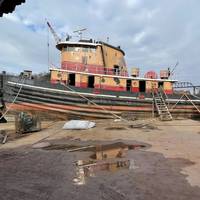
A first-of-its-kind project to convert a 1950s tugboat to run on ammonia-to-power technology is moving forward, with several key milestones recently achieved, involved technology partners report.The Amogy-led retrofit project involves a comprehensive overhaul of the tugboat's original diesel generators and electric motors, integrating the Brooklyn startup's 1-megawatt ammonia-to-power system.Once installed, Amogy’s onboard solution will feed liquid ammonia through its cracking modules integrated into a hybrid fuel cell system that will provide zero-carbon power to the vessel’s electric motors.
McAllister Towing Releases Its First Sustainability Report
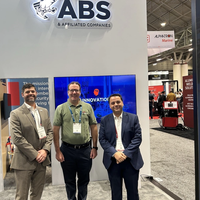
McAllister Towing has released its inaugural sustainability report.ABS specialists worked with McAllister’s team to provide greenhouse gas inventory and sustainability reporting services, calculating the operational carbon intensity and benchmarking the performance of the McAllister fleet of more than 60 vessels, including tugboats, passenger ferries, offshore supply vessels, crew boats and barges in over 13 locations along the U.S. East Coast.The report covers topics such as McAllister’s fleet profile…
Eastern Pacific Shipping Orders Four LNG Containerships for Crowley Charter
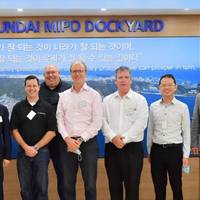
Singapore-based Eastern Pacific Shipping (EPS) said it has secured a contract from U.S.-based Crowley for the charter of four dual fuel liquified natural gas (LNG) powered containership newbuilds.The 1,400-TEU vessels, which will be built by South Korea’s Hyundai Mipo Dockyard for delivery in 2025, will be deployed on Crowley’s U.S.-Central America trade connecting U.S. markets to Nicaragua, Honduras, Guatemala and El Salvador. Each ship will feature 300 refrigerated unit plugs.Using LNG significantly lowers vessel greenhouse gas emissions…
Helix, Volstad Agree Long Term Charters for Construction Support Vessel Duo
Helix Robotics Solutions Limited, the U.K. Robotics division of Helix Energy Solutions Group, and the Norwegian shipowner Volstad Maritime have agreed on five-year charter extensions for both the Grand Canyon II and Grand Canyon III construction support vessels to continue working on projects across multiple energy sectors.The two vessels have been under long-term charter with Helix since 2015 and 2016, respectively. The extended charter for the Grand Canyon II runs from January 2023 through the end of 2027, while the extended charter for the Grand Canyon III runs from May 2023 through May 2028, with a further option to extend. Financial details were not disclosed.
AWO Urges California to Reconsider Proposed Harbor Craft Engine Emissions Rules
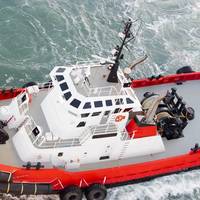
A trade group representing the U.S. tugboat, towboat and barge industry is urging the California Air Resources Board (CARB) to reconsider new harbor craft engine emissions regulations that many in the industry say will be difficult, if not impossible, to comply with.The American Waterways Operators (AWO) said it is "deeply concerned that CARB's proposed regulations mandate engine technology that is not available and is not certified as safe by the U.S. Coast Guard; impose an infeasible compliance schedule…
Maersk to Trial Silverstream Air Lubrication System
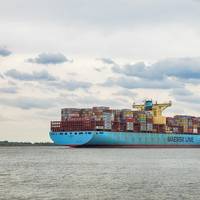
The world’s largest container vessel operator A.P. Moller - Maersk will trial an air lubrication system on board one of its vessels to examine possible improvements to overall efficiency, focusing on the reduction of fuel consumption and associated emissions.Technology group Wärtsilä, in cooperation with Silverstream Technologies, will install Silverstream’s proprietary air lubrication system, the Silverstream System, on one of Maersk's owned large container vessels for a trial program that will have a special emphasis on the potential application of the system for methanol-fueled ships.
Shell Outlines Plans for Decarbonized Shipping
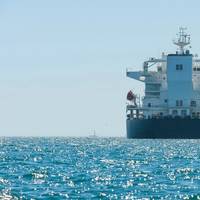
It will take well-defined goals and a mix of new green technologies to meet the International Maritime Organization's (IMO) target to achieve net-zero shipping emissions by 2050, oil major Shell said in a newly published report.In the report, Decarbonizing Shipping: Setting Shell’s Course, Shell highlights the role that hydrogen and fuel cells could play in achieving a decarbonized shipping sector. Calling for the IMO to adopt a clear trajectory to net-zero emissions by 2050,…
Wärtsilä Testing Ammonia as a Marine Fuel
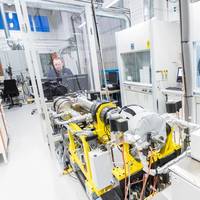
As marine operators and euipment manufacturers continue to explore alternative marine fuels as a means to help lower vessel emissions, technology group Wärtsilä said it has initiated combustion trials using ammonia.As part of the tests, ammonia was injected into a combustion research unit to better understand its properties. Based on initial results, the tests will be continued on both dual-fuel and spark-ignited gas engines. These will be followed by field tests in collaboration with ship owners from 2022…
Rewrite the Rules: The Path to Zero Emissions
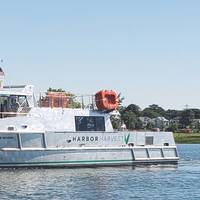
With social media updates and conference agendas addressing the subjects of climate change, emissions reductions and alternative fuels, it’s a wonder we are not climbing the Himalayans in search of the Jedi Master that will provide us with the magic potion. Yoda’s blessing with a calming breath, “You have chosen wisely.”Government emissions intervention started with a move to reduce energy and fuel consumption measured in greenhouse gas (GHG), at a time when the world and our politicians spoke about global warming.
Cummins Tech for IMO Tier III
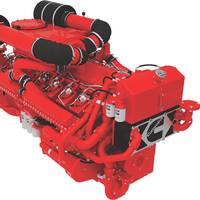
Cummins Inc. revealed today the company’s solution for the impending start of International Maritime Organization (IMO) Tier III emission regulations, using proven Tier II engine technology and adding a Selective Catalytic Reduction (SCR) aftertreatment system. A unique feature will allow the ship’s crew to manually “pause” the SCR system whenever operating outside of a controlled emission area, thus reducing DEF usage and expenses for a lower cost of operation.The dual-tier strategy has another significant benefit…
Sembcorp Marine Bags Offshore Wind and Ferry Projects
Sembcorp Marine is breaking new ground in renewable energy engineering solutions with two separate projects worth over S$200 million (USD 145 mln).The Group has inked an agreement with Ørsted Wind Power subsidiary Optimus Wind Limited for engineering, procurement, construction, hook-up and commissioning works on two topsides, to be deployed at the Hornsea 2 Offshore Wind Farm in the UK North Sea.With a combined weight of approximately 8,700 tonnes, the two topsides will be fabricated at Sembcorp Marine’s integrated yard facilities for delivery in the first quarter of 2021.The 1.4 gigawatt (GW) capacity Hornsea 2 Offshore Wind Farm – the world’s biggest when operational in 2022 – is located 89km north-east of Grimsby…
Interview: Volvo Penta's Ron Huibers
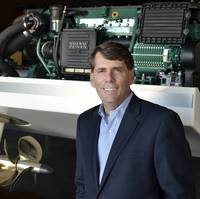
As Volvo Penta continues its strategic penetration of the commercial maritime sector, Maritime Reporter & Engineering News checks in with Ron Huibers, President, Volvo Penta of the Americas. When we first met with you a few years ago, Volvo Penta was in the early stages of a strategic move into the commercial maritime sector in North America. Please update your progress. Historically, we have been strong in the marine commercial markets outside of North America. Five years ago…
Best Workboats of 2017
Marine News showcases the best of North America’s 2017 workboat deliveries. There is something for everyone. Notwithstanding the lingering offshore energy downturn, there were plenty of bright spots for North American shipyards in 2017. If a hull was delivered in 2017, we took a look at it, with several areas as a focus for inclusion into this edition. For starters, it is always exciting when a domestic yard delivers a vessel – or multiple vessels, for that matter – to foreign buyers. We can compete in a foreign arena; on price, quality and on-time delivery. This year was no different. No less important is the environmental footprint of a vessel, and there was plenty to report on from that angle in the past 12 months. The domestic waterfront is indeed getting greener and cleaner.
Emissions Regulations Present Strategic Opportunity

The marine industry as a whole is responsible for about 2.5 percent of global greenhouse gas emissions. Shipbuilders and fleet owners have spent the last two decades adjusting to shifting emissions regulations since the introduction of the MARPOL Convention 1997 Protocol, which included specific regulations for the reduction of air pollution from marine vessels. Since then, there have been additions and amendments to ensure that the industry is doing its bit to better support the environment, with the latest regulation pulling forward lower caps in global emissions.
Crowley in Command
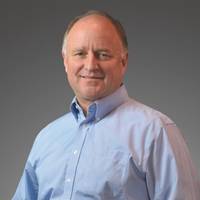
Tom Crowley has become the face of the U.S. maritime industry, steadily building his transport and logistics company into a formidable goliath. From Jones Act waivers to emerging emissions technology to the devastation of Hurricane Maria on Puerto Rico, Crowley weighs in on the pressing matters of maritime with refreshing candor. The last time we caught up with Tom Crowley two years ago at this headquarters in Jacksonville, Fla., we were handed a safety bulletin and Tom Crowley himself came down to the lobby to greet us.
Harley Marine Christens Earl W Redd

Harley Marine Services christened its newest tractor tug Earl W Redd, officially welcoming her to the fleet on Friday, February 10. Built at Diversified Marine of Portland, Ore., the Earl W Redd features twin Cat 3516 Tier 4 Final main engines that will each produce 2,675 horsepower at 1,600 rpm. Each of the engines is paired with a selective catalytic reduction (SCR) after treatment system that uses a urea-based solution to reduce NOx contained in diesel exhaust down to nitrogen and water vapor.
Harley Marine Welcomes First US EPA Tier 4 Tractor Tug
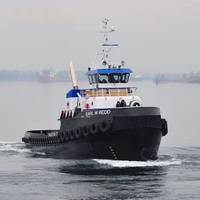
Harley Marine Services accepted delivery of its newest tractor tug, Earl W Redd, a first-of-its-kind workboat equipped with Caterpillar's Tier 4 emissions technology. The vessel enters the Harley fleet as one of the most efficient and environmentally conscious vessels in the world, exceeding the toughest marine EPA standards. Built at Diversified Marine of Portland, Ore., the Earl W Redd measures 120 feet by 35 feet, with a loaded draft of 19 feet 3 inches. The tug features twin Cat 3516 Tier 4 Final main engines that will each produce 2,675 horsepower at 1,600 rpm.
Port of LA Continues Zero Emissions Push

The Port of Los Angeles has issued a draft white paper on zero emission technology that details the port’s testing of zero emissions technology to date, and its proposed near-term plan for encouraging zero emission technology use in maritime goods movement, particularly as it relates to drayage trucks and yard tractors. By 2020, the port plans to facilitate testing and development of up to 200 zero emission vehicles. “While we’ve made great strides in reducing emissions and greenhouse gas emissions over the last decade…
Caterpillar to Deliver Highest Horsepower Tier 4 Solution
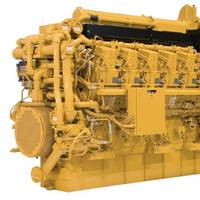
Edison Chouest Offshore has selected Caterpillar Marine's Cat Tier 4 Final C280-16 generator sets for two new vessels, Caterpillar announced today. The generators are the marine industry's highest horsepower Tier 4 solution, as well as one of the largest diesel electric propulsion (DEP) configurations in company history. Four Cat C280-16 generator sets, each rated at 5060 bkW @ 900rpm will power each vessel, which are being constructed at Edison Chouest’s La Ship shipyard in Houma, Louisiana.
Air Pollution Continues Decline at Port of Long Beach
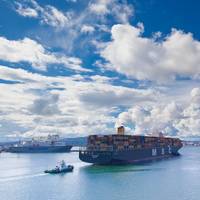
Diesel air pollution from ships, trucks, trains and other big machines at the Port of Long Beach has declined by 82 percent since 2005, a comprehensive air quality analysis has found. The report – which focuses on 2013 – shows seven straight years of steadily declining air pollution from goods movement in the harbor area. Compared to emissions levels in 2005 — when the port adopted its Green Port Policy — all of the key air pollutants from port-related sources have declined in 2013.
Cruise Industry Poised for Global Growth

The global cruise industry and its fleet of increasingly large, ultra-modern ships is projected to continue its steady growth in 2014, powered by growth overseas, particularly in the German market, as well as the adoption of faster, stronger and generally better satellite communication technology that is moving toward the level of seamless, cost-effective communication connections that can be expected at a land-based vacation destination. The Cruise Lines International Association (CLIA)…


